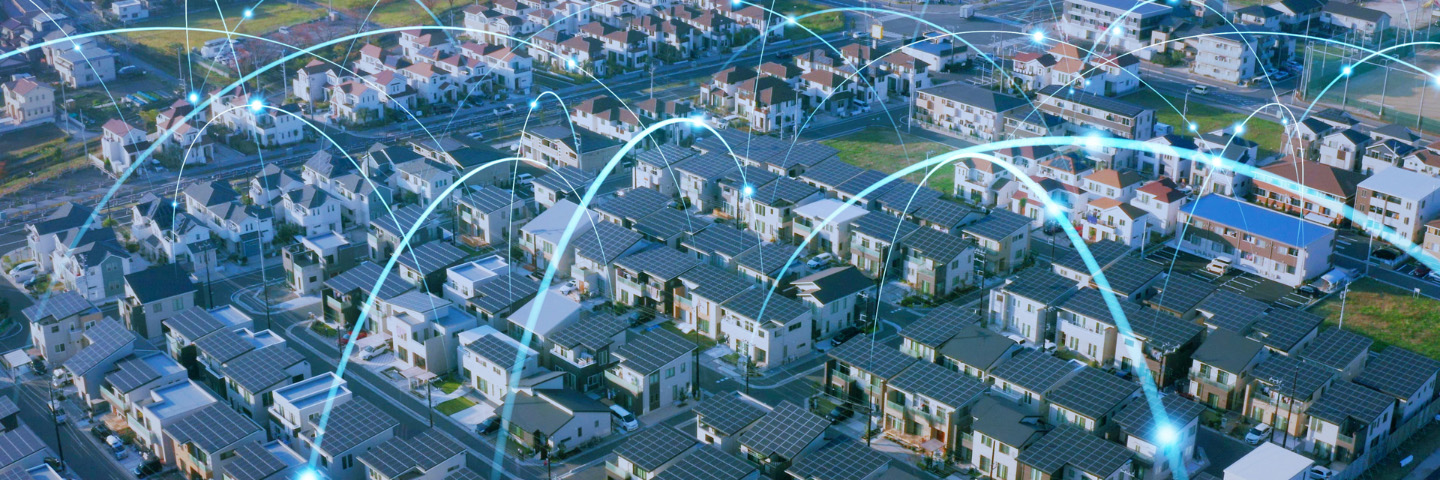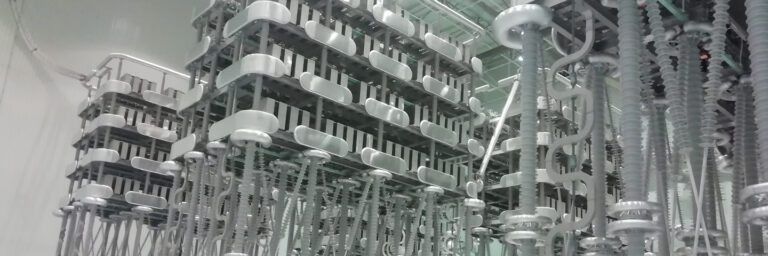Ensuring the safety, reliability, and efficiency of electrical systems
The protection of smart AC and DC grids is crucial for ensuring the safety, reliability, and efficiency of electrical power distribution systems. Here are some key aspects of grid protection
Overcurrent protection
Smart grids utilize overcurrent protection devices such as fuses, circuit breakers, and relays to safeguard against excessive current flow that can lead to equipment damage or electrical fires. These devices quickly interrupt the circuit in case of a fault, preventing damage to downstream equipment.
Voltage protection
Devices for voltage protection monitor the grid for abnormal voltage levels, such as overvoltage or undervoltage conditions. These conditions can damage connected equipment or disrupt operations. Voltage regulators and voltage monitoring relays are commonly used to maintain voltage within acceptable limits.
Frequency protection
In AC grids, maintaining the frequency within a narrow range is essential for the stable operation of connected devices. Frequency protection devices, including underfrequency and overfrequency relays, monitor grid frequency and initiate corrective actions. These actions to restore balance include load shedding or generation control.
Isolation and ground fault protection
Isolation and ground fault protection devices detect faults that occur between conductors or between conductors and ground. Isolating the faulty section of the grid to prevent further damage and ensuring personnel safety.
Advanced grid analytics
Smart grid analytics tools leverage data from sensors, meters, and other grid devices. Identifying potential vulnerabilities, predict and prevent faults, optimize grid operations, and enhance overall grid resilience and reliability. Our sister company morEnergy specializes in advanced (DC) grid impedance measurement solutions.
Protection of smart AC and DC grids
HVDC grids
High-Voltage Direct Current (HVDC) grids are a type of electrical power transmission system that uses direct current (DC) rather than alternating current (AC) for the transmission of electricity over long distances. HVDC grids consist of multiple interconnected HVDC transmission lines, converters, and substations. Enabling the efficient transfer of large amounts of power across vast distances with minimal losses.
Some key features and components
Converters
HVDC grids utilize converter stations at each end of the transmission line to convert alternating current (AC) to direct current (DC) for transmission and vice versa. There are two main types of converters; rectifiers, which convert AC to DC, and inverters, which convert DC back to AC.
Transmission lines
HVDC transmission lines carry the direct current (DC) from one converter station to another. These transmission lines are typically overhead lines or submarine cables and can span hundreds or even thousands of kilometers.
Substations
Substations are located at each end of the HVDC transmission line and house the converter stations. They also serve to connect the HVDC grid to the AC grid. Allowing for the integration of HVDC transmission into existing AC power systems.
Control and protection systems
HVDC grids incorporate advanced control and protection systems. This is done to monitor and manage the flow of electricity, maintain voltage and current levels within specified limits, and protect against faults and disturbances in the grid.
Benefits and applications
DC microgrids with integrated renewable energy sources
DC microgrids with integrated renewable energy sources are localized electrical distribution networks that operate on direct current (DC). They incorporate renewable energy generation sources such as solar photovoltaic (PV) panels, wind turbines and small-scale hydroelectric generators.
Key characteristics and components
Unlike traditional AC microgrids, which operate on alternating current (AC), DC microgrids utilize direct current (DC) for power distribution. This transition simplifies integration with renewable energy sources, as many of these technologies inherently produce DC electricity.
Additionally, DC microgrids commonly integrate renewable energy sources such as solar PV panels, wind turbines, and small-scale hydroelectric generators for local electricity generation. This direct current can be seamlessly incorporated into the DC microgrid without the need for DC-AC conversion.
Furthermore, energy storage systems, like batteries or supercapacitors, are frequently incorporated into DC microgrids to store excess energy. This stored energy from renewable sources can then be utilized during periods of low generation or high demand. By doing so, energy storage enhances the reliability and stability of the microgrid, offering backup power and smoothing out fluctuations in renewable energy output.
Moreover, DC microgrids power DC loads directly, eliminating the inefficiencies associated with DC-AC-DC conversions often found in AC microgrids. These DC loads encompass lighting, appliances, electronics, and other devices that operate on DC power.
Power electronics
Power electronic devices such as DC-DC converters and DC-AC inverters are used in DC microgrids to manage the flow of electricity. But also to convert between different voltage levels and interface with AC grid connections or loads that require AC power.
Control and monitoring systems
Advanced control and monitoring systems are essential for the efficient operation of DC microgrids with integrated renewable energy sources. These systems manage power flow, optimize energy generation and consumption, and ensure grid stability and reliability.
Benefits
DC microgrids with integrated renewable energy sources offer several benefits. Including higher efficiency due to reduced conversion losses and increased reliability. Besides, they also offer resilience through distributed generation and energy storage. Lastly they reduce the dependency on centralized power grids and environmental sustainability through the use of renewable energy.
Smart grids in other industries
AC and DC traction networks
Smart AC and DC traction networks represent the next generation of railway electrification systems, incorporating advanced technologies for enhanced efficiency, reliability, and control. Read more in our railway industry page.
Onboard maritime smart power grids
Onboard maritime smart power grids are advanced electrical distribution systems implemented on ships and maritime vessels. They integrate cutting-edge technologies for enhanced efficiency, reliability, and sustainability.
The use of solid-state technology
The protection and management of electrical current with solid-state technology involve the use of semiconductor devices, such as thyristors, insulated gate bipolar transistors (IGBTs), and silicon carbide (SiC) devices, to control the flow of electrical power in a more efficient, reliable, and precise manner.
Some key aspects
Solid-state circuit protection
Solid-state devices are used for circuit protection, replacing traditional mechanical components such as fuses and circuit breakers. They offer faster response times, higher reliability, and greater flexibility in managing overcurrent and short-circuit conditions.
Fault detection and isolation
Solid-state technology enables advanced fault detection and isolation techniques to quickly identify and isolate faulty sections of electrical circuits. This helps prevent damage to equipment and ensures the safety and reliability of electrical systems.
Current limiting and regulation
Solid-state devices can be used to limit and regulate electrical current flow in a controlled manner. This is particularly useful in applications where precise current control is required, such as motor drives, power supplies, and renewable energy systems.
Voltage regulation and stabilization
Solid-state voltage regulators and stabilizers utilize semiconductor devices to maintain stable voltage levels in electrical systems, compensating for fluctuations in input voltage or load variations. This ensures consistent performance of connected equipment and protects against voltage-related issues.
Power quality improvement
Solid-state technology can improve power quality by reducing harmonics, mitigating voltage sags and swells, and providing power factor correction. This enhances the efficiency, reliability, and performance of electrical systems, especially in sensitive applications such as data centers, manufacturing plants, and healthcare facilities.
Digital control and monitoring
Solid-state technology enables digital control and monitoring of electrical currents, allowing for real-time adjustment of parameters, remote operation, and integration with smart grid and IoT (Internet of Things) systems. This enhances system flexibility, scalability, and adaptability to changing operational requirements.


